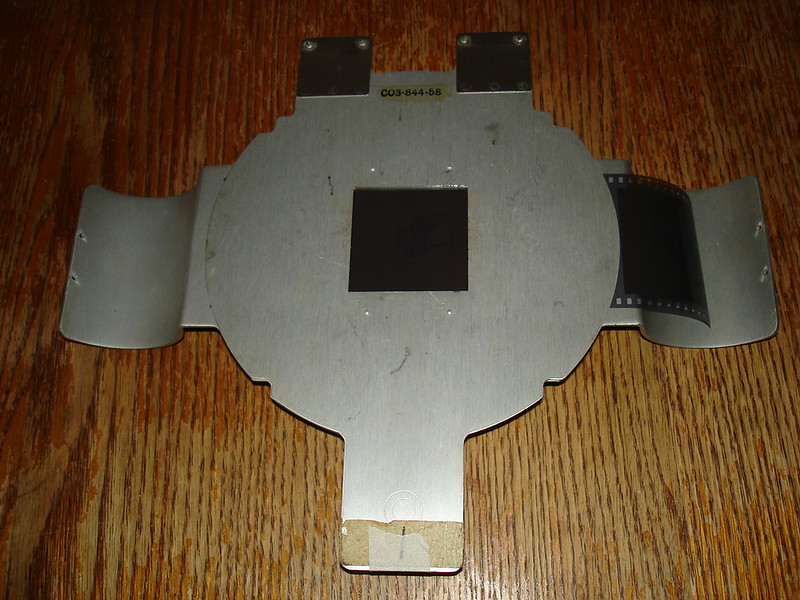Cal,
I've not had any difficulties loading the 70mm reel. But it is good to practice and not be in a hurry. Also I bought an old outdated roll of 100' 70mm Vericolor III perfed for ten bucks at Columbus Camera Group years ago. I use it to make dummy 70mm rolls and to practice loading the reel in the light and to test the film backs. You could run a roll through and magic marker it with sharpie pen. That is what I do. Then look at the roll and count the frames
How far does the film counter go on the baby Linhof back? That should tell you what you need to know
The Linhof Cine Rolliex is advertised as 70 6x7 exposures. Out of guessing a roll of 120 is about 3 feet of film and ten exposures if I'm not hallucinating, but there is a leader and a short tail...
If I could find out how many 6x6 or 6x7 exposures on 15 feet of film it would be very helpful to do the math.
BTW my "Slacker's Brew" (Diafine) which gets reused seems ideal for developing 70mm. It is a two part compensating developer that I kinda made work for me, a lazy slacker, who annoys people. LOL.
The highlights kinda get a stand development treatment, and what I love is that there is enhanced shadow detail that is so much like large format. I tend to underdevelope by under agitating (only two inversions per minute instead of three) and this underagitation also makes for smaller grain. Tri-X has only more percievable grain than Acros, and to see the difference one needs a light table and a 4x loupe to see that Tri-X has slightly more grain.
Another bonus is a bump in film speed with Tri-X (800 ISO), but with Acros I shoot box speed (100 ISO). The results are a bit like HDR in film and your negatives will kinda resemble a larger format. A friend of mine who is a large format shooter once said, " With negatives like these you don't need a 4x5," and he was looking at some of my 6x9 negatives.
Diafine in Panthermic, so as long as it is above 68 degrees F all is good and temperature is not a variable and needs not to be controled. Remember I'm a lazy slacker, or perhaps a clever slacker. LOL.
The development times are short. Tri-X is soaked in Part "A" for three minutes with the gentlest two inversions per minute, then poured out to be reused. No real developing happens until Part "B" activates the Part "A" that previously soaked into the film. A stand like development kinda happens to the highlights, so unless you really are grossly off with exposure the highlights will never be blown.
Diafine is an strong aggressive developer so the amount of shadow detail is mucho. By underdeveloping I basically am dialing in the mids. Understand that I kinda threw away the instructions and did not follow the directions, but because I'm a mucho clever guy I figured out how to make Diafine work for me. The recommended ISO's to me are very aggressive, and realize that I'm trying to make denser negatives for wet printing and not scanning.
With Diafine when in doubt always overexpose. The original purpose for Diafine is to unwind high contrast, but I get full range tonality of larger formats.
I hope I added something useful to your thread. Lets do/make crazy. "Crazy is good," I say. That 70mm Kodak WL Surveilence film which you say resembles Tri-X seems like a great place to start. Imagine 800 ISO, no grain, and full range of tonality (mucho mids).
Cal






